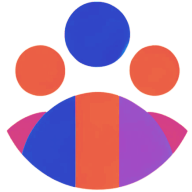The Most Impactful Way to Measure Diversity Framework Success
Diversity frameworks have become essential for modern organizations seeking to foster inclusive environments and drive success. This article delves into the most effective methods for measuring the impact of these initiatives, drawing on insights from industry experts. By exploring key topics such as diverse perspectives, holistic approaches, and retention tracking, readers will gain valuable knowledge to enhance their diversity efforts and improve overall business performance.
- Diverse Perspectives Boost Project Outcomes
- Holistic Approach Drives Inclusive Environment
- Retention Tracking Spurs Meaningful Change
- Diversity Improves Business Performance Metrics
- Representation Analysis Fuels Organizational Growth
Diverse Perspectives Boost Project Outcomes
One of the most impactful ways we've measured the success of our diversity framework at Spectup has been through tracking the diversity of perspectives in project decision-making and investor engagement outcomes. It may sound abstract at first, but we noticed early on that when we had more varied backgrounds in the room—cultural, professional, and geographic—the quality and creativity of our client deliverables significantly improved. I remember a pitch deck review session where one of our newer team members, who had a completely different professional background than the rest of us, pointed out a narrative inconsistency we'd all missed. That moment stuck with me because it was such a clear, tangible result of having more than the usual voices at the table.
To measure this more deliberately, we began mapping project outcomes—like investor interest post-pitch or client satisfaction—against internal team composition. What we saw was consistent: teams with more diverse input had stronger fundraising outcomes and faster iteration cycles. That's when we started integrating a "diversity of thought" lens into team assignments, not just CV diversity. The meaningful change came when we adjusted hiring to focus on potential and mindset over standard career paths, which led to better collaboration across borders and even helped us build more inclusive venture scout programs. Diversity became less of a checkbox and more of a strategic edge, especially in the high-stakes, high-velocity environment we operate in.

Holistic Approach Drives Inclusive Environment
At Zapiy, the most impactful way we've measured the success of our diversity framework has been through a combination of qualitative feedback and tangible data tracking—specifically, by regularly assessing employee engagement, retention, and the diversity of candidates throughout our hiring pipeline.
From the beginning, we understood that diversity isn't just about numbers; it's about fostering an inclusive environment where everyone feels valued and empowered to contribute. To capture this, we implemented anonymous employee surveys that go beyond basic demographics to explore how people experience inclusivity, whether they feel heard, and if they believe their unique perspectives are appreciated.
On the data side, we closely monitor recruitment metrics, looking at the diversity of applicants at each stage—from initial contact to interviews and offers. This transparency allows us to identify and address potential biases or barriers in our hiring process. We also track retention rates and career progression to ensure that diverse talent isn't just brought in, but supported and given room to grow.
The real power of this measurement comes from the actions it drives. For example, when our data revealed a gap in retention among certain groups, we responded by launching targeted mentorship programs and revisiting our workplace policies to create more flexibility and support. The employee feedback showed us where communication and cultural alignment needed strengthening, prompting us to invest in training and open forums that encourage honest dialogue.
These ongoing efforts have translated into meaningful change. Not only have we seen a more diverse team grow at Zapiy, but there's also a noticeable improvement in collaboration and innovation. When people feel genuinely included, they bring their best ideas forward, which drives better outcomes for our company and the clients we serve.
Measuring success through both numbers and lived experiences has been key. It keeps us accountable, informed, and motivated to keep evolving. For any organization serious about diversity, this holistic approach to measurement isn't just beneficial—it's essential.
Retention Tracking Spurs Meaningful Change
We stopped measuring diversity success through headcounts and started tracking retention and internal mobility across underrepresented groups. The shift came after a sharp realization: diversity without inclusion is just turnover with better optics. Our dashboards now flag drop-offs post-hiring, track promotion rates, and highlight where talent stalls.
One insight hit hard: mid-level women in tech roles were plateauing. We built targeted mentorship programs and restructured performance reviews to reduce unconscious bias. Within a year, internal promotion rates for those roles rose by 22%. The change wasn't just statistical; it was cultural.
People began to trust that equity wasn't just policy but practice. Real success came not from filling seats but from making sure the right people could rise. That's when the framework stopped being a document and became a system that moved.

Diversity Improves Business Performance Metrics
A great way to measure the success of a diversity plan is to see how it improves your business. Look at factors such as employee retention, customer satisfaction, and innovation. For example, you could track how diverse perspectives have led to new products or opened new markets. For business owners, monitoring employee engagement and diversity in leadership roles can demonstrate how inclusive practices lead to stronger teams and long-term growth. This approach ensures your diversity efforts are practical and beneficial for your business.
Representation Analysis Fuels Organizational Growth
Evaluating the effectiveness of our diversity strategy at TradingFXVPS has been an intentional and enlightening journey. One of the most significant methods we've employed is analyzing representation within our workforce, particularly in leadership positions. Beyond statistics, we actively assess inclusivity in our workplace by conducting regular anonymous feedback forms to better understand the real experiences of our team members. These forms offer critical insights and enable us to tackle specific obstacles efficiently.
The outcome has been a clear boost in employee morale and a stronger sense of unity throughout the organization. Furthermore, we track the concrete benefits of diverse viewpoints, such as enhanced creativity and innovation in solving challenges, which directly lead to higher client satisfaction in the forex and trading industries. The insights and data we gather are more than just figures; they are catalysts for ongoing advancements. This dedication to diversity and inclusion has become a fundamental part of our growth, fueling both individual and collective success.




